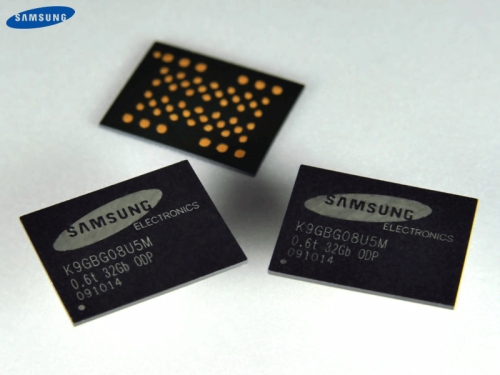Samsung announced that it has produced the world's thinnest multi-chip memory package for smartphones, portable media players, and other devices. The package measures a mere .6mm in height and contains 32GB of storage. Samsung's new product is 40% thinner and lighter than currently available memory packages.
The .6mm-package contains eight 30nm, 32Gb NAND flash chips, each measuring only 15um (.015mm) thick. This super thin multi-die memory package overcomes the conventional technology limits of a chip's resistance to external pressure when under 30um in height, and will allow for double the density of previous multi-chip packages, according to Samsung. The company has not publicly named any customers for the new product, but I imagine they'll find a home in various gadgets soon enough.

Research from iSuppli suggests that demand for memory cards of 2GB densities and higher will grow from 310 million units in 2009 to 7.7 billion units by 2012. The outfit also estimates demand for memory cards 16GB and higher to be 35 million units this year, and 530 million by 2012 -- a 15-fold growth.
https://www.techspot.com/news/36853-samsung-announces-new-6mm-thick-nand-memory-package.html